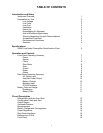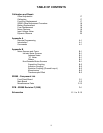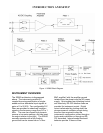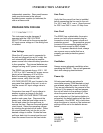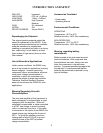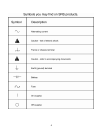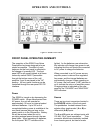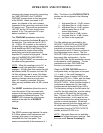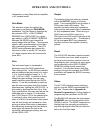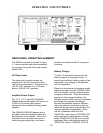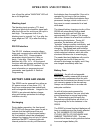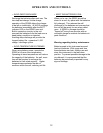INTRODUCTION AND SETUP
3
ROLLOFF bypassed
HIGH-PASS 0.03 Hz, +6 dB/oct
LOW-PASS 1 MHz, -6 dB/oct
GAIN MODE High Dynamic
Reserve
GAIN 20, calibrated
LISTEN ON
DEVICE ADDRESS As per SW601
Repackaging for Shipment
The original packing materials should be
saved for reshipment of the SR560. If the
original packing materials are not available,
wrap the instrument in polyethylene
sheeting or equivalent and place in a strong
box, cushioning it on all sides by at least
three inches of high-density foam or other
filler material.
Use in Biomedical Applications
Under certain conditions, the SR560 may
prove to be unsafe for applications involving
human subjects. Incorrect grounding,
component failure, and excessive common-
mode input voltages are examples of
conditions in which the instrument may
expose the subject to large input currents.
Therefore, Stanford Research Systems
does not recommend the SR560 for such
applications.
Warning Regarding Use with
Photomultipliers
The front-end amplifier of this instrument is
easily damaged if a photomultiplier is used
improperly with the amplifier. When left
completely unterminated, a cable connected
to a PMT can charge to several hundred
volts in a relatively short time. If this cable
is connected to the inputs of the SR560, the
stored charge may damage the front-end
FETs. To avoid this problem, provide a
leakage path of about 100 kΩ to ground
inside the base of the PMT to prevent
charge accumulation.
Accessories Furnished
- Power cable
- Operating Manual
Environmental Conditions
OPERATING
Temperature: 10°C to 40°C
Relative Humidity: <90% Non-condensing
NON-OPERATING
Temperature: -25°C to +65°C
Relative Humidity: <95% Non-condensing
Warning regarding battery
maintenance
Batteries used in this instrument are seal
lead acid batteries. With usage and time
these batteries can leak. Always use and
store this instrument in the feet-down
position. To prevent possible damage to the
circuitboard, it is recommended that the
batteries be periodically inspected for any
signs of leakage.





